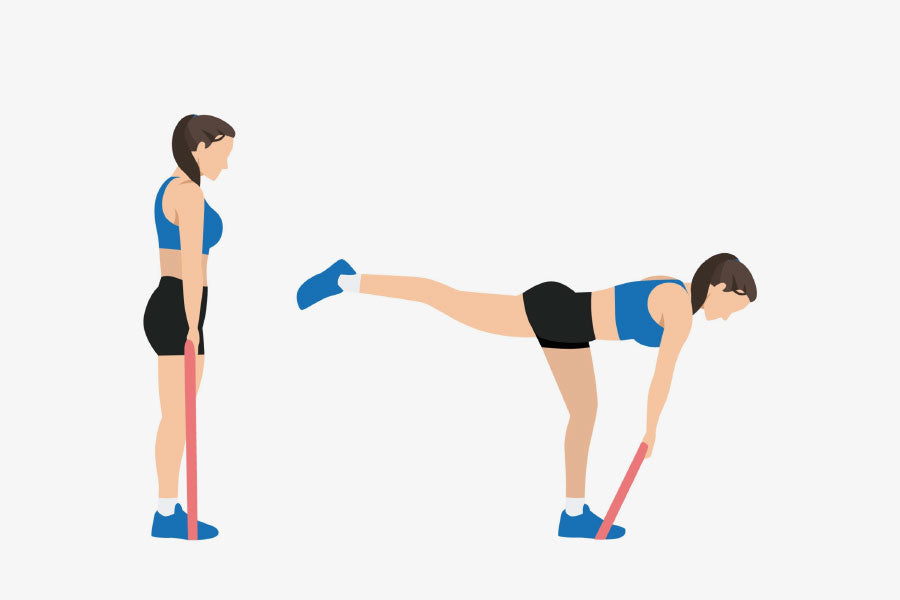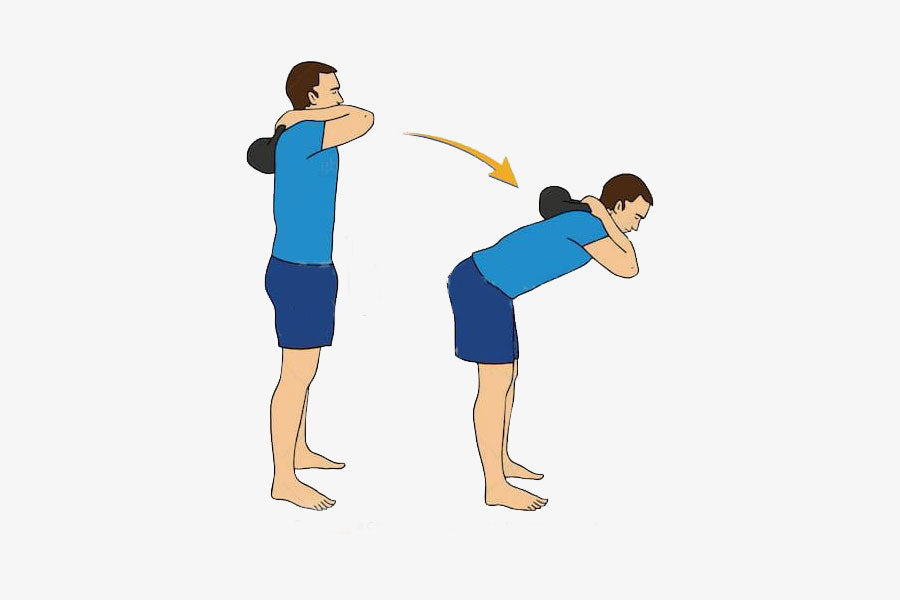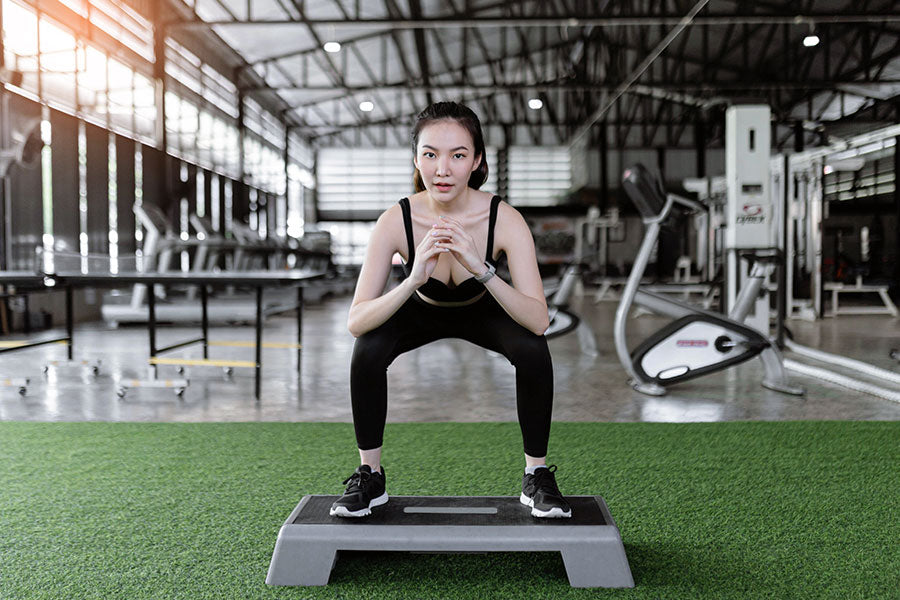The ability to effectively perform hip hinging is one of the fundamental movements everyone should master. This is because it is a motion you should incorporate into your daily routine to safeguard your back against potential injuries.
To a significant degree, one's strength, performance, and ability to avoid injuries caused by exercise can all be improved by becoming proficient in the correct form for hip hinge exercises.
It doesn't matter if you're just trying to get through the day or getting ready for a big game; the hip hinge movement is essential. The hip hinge exercise should serve as the foundation of any good training program due to the significant muscle activation and benefits it produces for the entire body.
To add more muscle to your frame, you must start incorporating hip hinge exercises into your routine. This movement is essential for triggering overall body growth and can be performed with various exercises.
Here are six of the best ones to try!
Understanding the Hip Hinge Movement
All exercises based on the deadlift incorporate the hip hinge as a fundamental component of the movement pattern. You should always use the deadlift movement pattern when picking up a heavy object from the ground. This is because it is the most efficient way to lift heavy loads.
The hip hinge movement, also known as the deadlift, is frequently confused with the squat movement, even though the two are quite distinct. The deadlift places more emphasis on the hips, while the squat places more emphasis on the knees.
In essence, the deadlift requires the hips to move backward and forwards, whereas the squat places the hips in a sitting position and moves them back and down.The following muscles are utilized during the hip flexion movement:
- Buttocks / Glutes (to extend the hip)
- Hamstrings (to extend the hip)
- Quads (hip flexor and knee extensor)
- Lower Back (for stabilization of the spine)
- Core muscles (for stabilization of hips and spine)
The deadlift movement pattern involves hunching the hips forwards and backward, which primarily works to develop the extensor muscles of the hips, specifically the glutes and hamstrings.
Because the knee does not bend as far in the deadlift as it does in the squat, the quadriceps are not worked nearly as hard, making the deadlift a more comfortable alternative for people who have knee issues.
The Hip Hinge Proper Form
To perform the hip hinge exercise, you must brace your core and push your hips backward. Since the upper body is leaning forward, it can counteract the hips' backward motion and evenly distribute the body's weight.
If you want your hands to reach the floor, you'll have to tilt your pelvis backward an increasing amount. Tight hamstrings can make it difficult to reach the floor with the hands as the hips are pushed backwards, and the hamstrings attached to the bottom of the pelvis are stretched.
Stop when you feel your hamstrings fully stretched; continuing past this point puts unnecessary stress on your lower back and can cause injury to your lumbar spine.
People with weak hamstrings can still do squats and deadlifts by reducing the range of motion. The reason kettlebells are so effective for hip hinge exercises is that the handle of a kettlebell is elevated above the floor, making it slightly easier to use.
Instructional Summaries for the Hip Hinge Movement
- Chest up
- Keep your back straight and your weight back on your heels to strengthen your hamstrings.
- Push the hips backward
- Engage your abs to keep your spine in a neutral position.
- Drive the hips forwards and stand tall
- Squeeze glutes at the top
- Be careful not to slouch or lean too far back.
Some of the Best Hip Hinge Exercise
Follow the most versatile hip hinge exercises you can easily include in your daily routine.
1. Kettlebell Swing

Nothing beats the kettlebell swing when it comes to dynamic hip hinge exercises. Kettlebell swings are great for building strength in your legs, glutes, hips, core, back, and arms and increasing your heart rate and stamina.
The buttocks are squeezed at the full hip extension while you fight the urge to lean backward. This is a classic hip hinge movement. Back and abdominal muscles are contracted to prevent spine bending, and all of one's weight is kept on one's heels and midfoot.
How to Do It
- Holding the "bell" stand tall.
- Keep your arms extended and relaxed while contracting your core and pressing your shoulder blades together.
- Lower your butt back and down toward the wall behind you while softening your knees and shifting your weight into your heels.
- To make the weight swing upward from your quadriceps, drive through your heels and burst through your hips. With your arms outstretched, aim for chest height.
- You must snap your hips, engage your core, and squeeze your glutes to reach this ending posture.
- Allow the weight to work as the kettlebell starts to fall as you put your weight back into your heels, hinge at the hips, and load your glutes and hamstrings.
- Accept the kettlebell's weight and let it ride back between your legs.
- Repeat
2. Dumbbell Clean

The dumbbell clean is a more advanced standing hip hinge exercise that requires a powerful hip drive to lift the dumbbell up to the shoulders. Although you may think it is the arm that pulls the dumbbell up to the shoulders in this exercise, it is, in fact, the hips that provide all the power; the arm is simply used to guide the dumbbell.
How to Do It
- Hold a dumbbell in each hand with your feet somewhat closer than shoulder-width apart.
- Establish a steady body stance and a straight spine.
- Using the deadlift method, lower the weights to the ground. Allow both weights to contact the ground.
- Put a lot of force into the ground with your feet, then burst upward to lift the weights off the ground.
- Drop your body down into a squat when your shoulders are at their highest position. Swing your elbows forward simultaneously.
- Move your elbows forward. Catch the dumbbells when they are in the front rack position.
- Exhale as you raise your body to its maximum length.
- Repeat.
3. Kettlebell Deadlift

The kettlebell deadlift is a great exercise for building strength and muscle mass in the lower body. The movement requires you to hinge at the hips and lower your body down to the ground before explosively standing back up.
This makes it an excellent compound exercise that simultaneously works for multiple muscle groups. Kettlebell deadlifts are relatively easy to learn and can be performed with relatively light weights, making them a great option for beginners. However, as with any exercise, it's important to ensure that you perform the kettlebell deadlift with the proper form to avoid injury.
How to Do It
- Start by placing a kettlebell on the ground before you and positioning your feet hip-width apart.
- Bend your knees and hinge at your hips to lower your body and grab the kettlebell with both hands.
- Drive your heels into the ground and stand up straight, extending your hips and squeezing your glutes at the movement's top.
- Finally, lower the kettlebell to the ground under control and repeat for reps.
4. Romanian Deadlift With Dumbbells

The Romanian deadlift is an effective method for strengthening the lower back, glutes, and hamstrings, much like the standard deadlift. By actively engaging your core, you will strengthen and stabilize that area. Instead of starting with the kettlebell in your hands, you'll start this exercise by standing up.
How to Do It
- Standing with feet somewhat wider than shoulder width
- Put one dumbbell in each arm while holding two, and lower your shoulders.
- Before you begin to move, strengthen your core.
- beginning to bend down from the hips now
- As you descend, externally rotate your knees.
- The whole time, maintain a neutral spine.
- Dumbbells should remain in front of you as you descend to mid-shin level.
- Now lift yourself up off the ground using your glutes and knees.
- Upon standing, squeeze your glutes.
Related Article: Exhaustive Full Body Dumbbell Workout You Can Do At Home
5. Resistance Band Single Leg Deadlift

The Resistance Band Single Leg Deadlift is one of the best exercises you can do with a resistance band, which is another piece of equipment with a lot of uses and is quite adaptable. Your hip mobility may be improved by using resistance bands, and you can also create strong muscle memory for this sort of movement.
How to Do It
- Grab a resistance band and loop it beneath your right foot.
- Take hold of the two ends, one in each hand.
- Stand with your feet hip-width apart, and your knees slightly bent.
- Raise the left foot that you have off the ground. This is the point from which you will begin.
- Your right knee should remain bent while you hinge at the hips and lower your body until it is virtually parallel to the floor.
- After pausing, return to the point where you began.
6. Kettlebell Good Morning

The kettlebell good morning is an excellent beginner-standing hip hinge exercise. Good morning kettlebell is a great exercise for working the whole posterior chain. It’s a compound movement, so it simultaneously hits the glutes, hamstrings, and lower back. Plus, it's also great for mobility because you’re moving through a range of motion.
How to Do It
- Start by standing with your feet hip-width apart and hold a kettlebell so its resting on your mid back.
- Hinge at the hips and push your butt back as you lower your torso down.
- Keep your back flat and your knees soft.
- Once you reach the bottom of the movement, drive through your heels to stand back up tall.
Related Article: Single Kettlebell Workout Program (7-Day Plan)
FAQs
1. What are the benefits of Hip Hinge Exercises?
Hip hinge exercises are a great way to strengthen the hips and improve flexibility. They can prevent injuries by stabilizing the joint. Some benefits of hip hinge exercises are:
- Strengthens the Hips: Hip hinge exercises help strengthen the muscles around the hip joint, improving your overall movement and reducing your risk of injuries.
- Improves Flexibility: Hip hinge exercises can also help improve your flexibility, stretching the muscles and tendons around the joint. This can help you move more freely and reduce stiffness.
- Prevents Injuries: Hip hinge exercises can help prevent injuries by stabilizing the hip joint. This is especially important for athletes or those who participate in high-impact activities.
- Improves Posture: Poor posture is a common cause of back pain. Hip hinge exercises can help improve your posture by strengthening the muscles around the hip joint and correcting any imbalances.
- Reduces Back Pain: Back pain is often caused by weak or tight muscles in the back. Hip hinge exercises can help stretch and strengthen the muscles in the back, which can relieve pain.
2. What is the proper way to bend your hips?
When completing any variation of the deadlift exercise, you should make a hinge with your hips. While keeping your back straight and your abdominal muscles engaged, press your hips backward to load your hamstrings and heels. The next step is to thrust your hips forward while contracting your glutes. Avoid putting too much strain on your lower back.
3. How do you do the hip hinge exercise?
The hip hinge includes reversing the position of your hips while maintaining a flat back position. When you lean forward with your upper body, you counteract the weight of your hips moving in the other direction.
4. What exactly are hinge lifts, though?
It's essentially a variation on the deadlift. Put your hands on the ground in front of you and position your feet, so they are slightly wider than shoulder-width apart. Push your hips rearward while you do this. Take hold of the kettlebell, then rise up by thrusting your hips forward and contracting your buttocks.
Take Away
You lose out on a huge potential if you do not include movements that hinge at the hip as part of your training routine. The action known as the hip hinge should be employed when executing workouts based on the deadlift. Achieving mastery of the hip hinge will develop strong and powerful hips, which are useful in day-to-day living and vital for athletic performance. You may work on your hip hinge by doing any of the exercises listed above, beginning with the ones that you feel are the least difficult and working your way up to the ones that are the most difficult.








